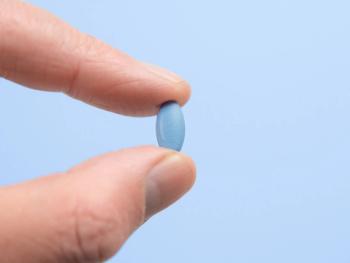
- Vol 42, Issue 11
Lamotrigine: An Update on Its Role in Bipolar Disorder
Key Takeaways
- Lamotrigine is effective for bipolar depression maintenance, with minimal side effects like weight gain and neurocognitive issues.
- The risk of severe rashes with lamotrigine is low and can be minimized through careful dosage titration and monitoring.
Explore the evolving role of lamotrigine in treating bipolar depression, highlighting its benefits, risks, and recent clinical guidelines.
BIPOLAR UPDATE
Some important changes in perspective have taken place since our last review of the role of lamotrigine in Psychiatric Times 6 years ago. A lot more is known about this drug, and it is well summarized in a long narrative review published in June 2025.1 Lamotrigine is established as a treatment for bipolar depression, especially for maintenance treatment. It is not associated with weight gain, which is a crucial difference from some of the other US Food and Drug Administration (FDA)-approved medications. All these second-generation antipsychotics (SGAs) may, under some circumstances, according to the latest guidelines, require treatment with metformin and sometimes other measures.2
Lamotrigine is also less likely to cause neurocognitive adverse effects and sedation. Most patients tolerate it well. It does carry a risk of dangerous rashes, including Stevens-Johnson Syndrome, but the risk is minimized by slow
dosage titration, alert monitoring, and evaluation of any of the more common rashes that can develop (up to 10%, some due to placebo effect). The incidence of severe rash now appears to be 0.03% to 0.08%, according to the findings of 2 large surveys.3,4 This means that for every 100 patients treated with lamotrigine who report a rash, fewer than 1 will turn out to have these
consequential rashes.
The evidence supporting lamotrigine usage for acute bipolar depression is mixed. Five placebo-controlled studies have been conducted, but only 1 showed positive results. As a result, lamotrigine did not receive FDA approval for acute bipolar depression. A meta-analysis of these 5 studies, however, found a small benefit with an overall effect size of 0.27.5 In patients with more severe depression (as measured by a Hamilton Rating Scale for Depression score of 24 or more), lamotrigine had a greater separation from placebo (effect size, 0.47) due to a lower placebo effect in this group. Lamotrigine was not better than placebo if the baseline Hamilton score was lower than 24 (effect size, 0.07). Underdosing may have contributed to these marginal results. Data from 2 small studies suggest that the therapeutic range might be approximately 4 to 11 μg/mL drawn 12 hours after the last dose.6,7 Often patients do not reach this range on the maximum dose used in most of the studies of 200 mg, so it seems that it might add some precision to dosing to check a level if results are unsatisfactory at that dose, but it is reasonably tolerated. Carbamazepine induces liver metabolism of lamotrigine, so if that is used, the likelihood of needing more than 200 mg is much greater.
The efficacy of lamotrigine as maintenance therapy is fairly robust. Evidence from 2 extensive, 18-month studies showed efficacy, enabling lamotrigine to obtain FDA approval for maintenance use.8,9 It had no efficacy for preventing mania, but did not increase the risk of mania compared with placebo. Lamotrigine also has shown no efficacy in treating acute mania, which makes it less desirable than lithium, quetiapine, or cariprazine for bipolar depression, in that there will be no coverage for manic or severe hypomanic phases of the illness, so a second medication will have to be added when this is needed. It has not demonstrated any apparent benefit for suicidal ideation or behaviors.1 In fact, like all anticonvulsants, lamotrigine carries a warning about possible increased risk of suicidality. However, for patients with bipolar II disorder and mild hypomania that do not cause significant problems, monotherapy with lamotrigine can be a reasonable option, and patients may cycle less often.1
Lamotrigine is a significant option for bipolar depression in women of childbearing potential. Despite some concerns mentioned in our review 6 years ago about fetal orofacial abnormalities, findings from many large surveys since then have enabled the conclusion that the agent is safe in pregnancy.1
Lamotrigine may be augmented by lithium in the treatment of acute bipolar depression; the combination appears more effective than either treatment alone.10 Considering this, the latest (2023) US Department of Veterans Affairs/US Department of Defense Clinical Practice Guideline for the Management of Bipolar Disorder (of which this writer was a coauthor) added the combination of lithium and lamotrigine to 4 other recommended initial treatments in an algorithm for acute bipolar depression.11 The 4 others are SGAs—quetiapine, lurasidone, cariprazine, and lumateperone—and are all FDA approved for treatment of acute bipolar depression. A fifth FDA-approved treatment, the combination of olanzapine and fluoxetine, was not recommended for early use because of the metabolic toxicity of olanzapine.
Dr Osser is an associate professor of psychiatry at Harvard Medical School in Boston, Massachusetts; a psychiatrist at the Veterans Affairs (VA) Boston Healthcare System, Brockton Division; and codirector of the VA National Bipolar Disorders TeleHealth Program. He reports no conflicts of interest concerning the subject matter of this article.
References
1. Żełabowski K, Wojtysiak K, Ratka Z, et al.
2. Carolan A, Hynes-Ryan C, Agarwal SM, et al.
3. Fukasawa T, Takahasi H, Takahashi K, et al.
4. Gronick N, Maman D, Stein N, Saliba W.
5. Geddes JR, Calabrese JR, Goodwin GM.
6. Kesebir S, Akdeniz F, Demir A, Bilici M.
7. Katayama Y, Terao T, Kamei K, et al.
8. Bowden CL, Calabrese JR, Sachs G, et al; Lamictal 606 Study Group.
9. Calabrese JR, Bowden CL, Sachs G, et al; Lamictal 605 Study Group.
10. van der Loos MLM, Mulder PGH, Hartong EGTM, et al; LamLit Study Group.
11. Ostacher MJ, Miller CJ, Edwards-Stewart A, et al.
Articles in this issue
10 days ago
Interrelation of Hormones and Adult ADHD17 days ago
ADHD: Correcting Careless Myths22 days ago
After Reading Music from Apartment 824 days ago
Let’s Retire HaloperidolNewsletter
Receive trusted psychiatric news, expert analysis, and clinical insights — subscribe today to support your practice and your patients.











